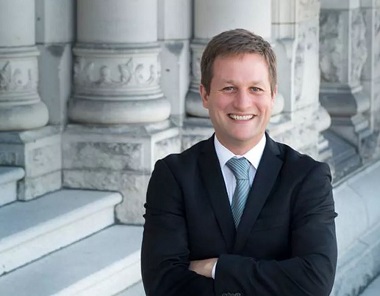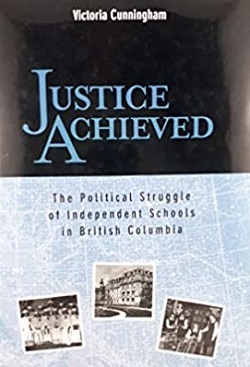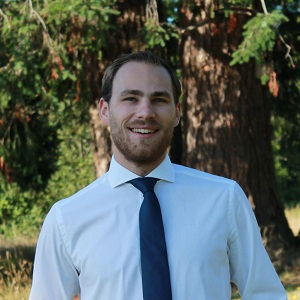
Minister of Education Rob Fleming has defended cuts to IDL school funding.
This seems to be a year of almost unlimited government spending. The federal government (as of April 30) announced that its deficit would be $252 billion this year.
The government of British Columbia is also spending $5 billion on a variety of COVID-related measures.
The dominant view among policy-makers and economists is that the government should spend, spend, spend to avoid an even deeper recession.
But, apparently, that fund-everything-in-sight logic doesn’t apply to Independent Distributed Learning (IDL) schools in BC. On May 4, the BC Minister of Education [Rob Fleming] decided to cut funding to these schools.
What are Independent Distributed Learning (IDL) schools?
IDL schools employ BC-certified teachers and follow the BC curriculum, just like brick-and-mortar public schools or other independent schools. What makes these schools distinct from other independent schools is that much of the students’ learning takes place at home, online or in weekly community programs.
There are 16 independent distributed learning schools recognized by the BC Ministry of Education, educating between 12,000 – 15,000 students. Several schools are distinctly Christian IDL schools. Other IDL schools serve students with special needs or students in remote communities, student bodies that traditional public schools or independent schools cannot adequately serve.
Other parents use these IDL programs so that their children have greater flexibility in their studies because they believe that this method of self-paced learning is better for their children or because of concerns about other local schools.
Why did the government cut funding?
The Ministry of Education justified this funding cut with claims that they were equalizing the level of funding received by independent distributed learning schools and brick-and-mortar independent schools.
For the last eight years, IDL schools have received 63 percent of the funding allocated to their public distributed learning counterparts. Most brick-and-mortar independent schools receive 50 percent public funding.
This funding cut for IDL schools was passed by Cabinet and not debated or approved by the Legislature. It slashes this level of funding for IDL schools down to 50 percent. Thus, each IDL school receives 21 percent less funding, or about $800 less, per student enrolled. Altogether, IDL schools will receive $12 million less next year.
Equalization is a poor excuse to cut funding to IDL schools. If funding equality is truly the goal of the Ministry of Education, why not raise the funding percentage for brick-and-mortar independent schools to 63 percent? Give the same amount of money to IDL students as to brick-and-mortar independent schools? Or fund all independent schools the same as public schools?
Why is this troubling?
Independent distributed learning schools – and independent schools in general – are an integral part of British Columbia’s education system. They contribute to a diversity of learning options that respect family and parental rights in educating their children, save general taxpayers money and improve student outcomes.
There are three main reasons why these funding cuts to specifically IDL schools should be troubling to Christians.
First, this funding cut comes despite the fact that John Horgan and the New Democratic Party committed to maintaining funding for all independent schools before the last election. Responding to an inquiry by the Federation of Independent Schools (FISA) in the spring of 2017, John Horgan promised that the NDP had no plans to reduce funding for independent schools. Yet, they cut funding anyway.
If the government is willing to break this promise to independent distributed learning schools, some asked whether the Ministry would also remove funding for other independent schools. A representative from the Ministry of Education responded that it has no intention of cutting any other independent school funding at this time. That is hardly a confidence-inspiring answer.
Second, the timing of the announcement was extraordinarily ill-timed. IDL schools began enrolment for the next school year on March 1. The funding cut announcement was made on May 4 and was to be put in force on July 1. Thus, parents had already committed to programs and expenses based on existing funding arrangements. If parents had been advised about the funding cuts well in advance of March 1, they could have planned accordingly.
Current financial hardship due to COVID exacerbates the challenge these parents face.
Third, these funding cuts affect some of the most vulnerable students in British Columbia’s education system. A disproportionate number of students with mental, physical or emotional challenges use the IDL school system to ensure that they get the individualized attention they need to learn and thrive.
This individualized learning is simply not available or sufficient at brick-and-mortar public or independent schools. The IDL schools also serve children in remote areas or in families that have to move often, cutting off long commute times or providing continuity in schooling. Other forms of schooling are not feasible for these students.
Conclusion
Justice Achieved : The Political Struggle of Independent Schools in British Columbia, a book by Victoria Cunningham, charts the history of independent schools in BC until 2001.
: The Political Struggle of Independent Schools in British Columbia, a book by Victoria Cunningham, charts the history of independent schools in BC until 2001.
The book recounts how the battle for independent school recognition and funding was a long battle, but that “eternal vigilance is the price of liberty.”
Back in the early 1990s, the last NDP government campaigned on the promise that it would not cut funding to independent schools, but reneged on this promise by reducing special education grants, then eliminating the Group 3 funding for independent schools, and finally by stealthily trying to change the funding formula for independent schools.
Two of these three policies were rolled back because of the public outcry against these attacks on independent schools.
A similar situation faces supporters of independent schools today. An NDP government promised to maintain funding for independent schools, yet it is breaking their promise, this time in the guise of reducing IDL funding.
Supporters of independent education must respond the same way as they did back in the early 1990s: write your MLA (especially if you have an NDP MLA) and the Minister of Education, Rob Fleming, and voice your concern with this policy.

Levi Minderhoud
Independent schools in BC can continue to enjoy one of the best educational arrangements in Canada only if they stand united and only if they fight against every encroachment upon their funding and jurisdiction.
Levi Minderhoud is the British Columbia Manager for ARPA Canada. This comment is re-posted by permission.
The Tyee posted an article on the situation June 22: ‘Education Minister Defends Funding Cut to Private Distributed Learning Schools.’
Heritage Christian Online School (HCOS) – the largest of the IDL schools – has a page devoted to the funding cuts.
Shawn Chisholm, executive director of FISA, responded June 24 to an email from Church for Vancouver with this comment: “FISA has been actively engaged in discussions with the Ministry of Education on the unanticipated and dramatic cut to IDL funding.”
